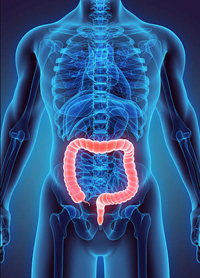The Truth About Colorectal Cancer Screening
 Why a colorectal cancer screening is important . . . and who should get screened.
Why a colorectal cancer screening is important . . . and who should get screened.
At some point, almost 1 in 20 people will contract some form of colorectal cancer. It’s the third most common cancer, and the second-leading cause of cancer deaths. The good news: between 85% and 90% of colorectal cancers can be treated and even prevented if caught early and the risk factors minimized.
The key is ‘if caught early’. That’s what screenings are for.
A screening colonoscopy is the best way to reveal and remove polyps — the unexpected tissue growths in the colon that can develop into cancer — before they have a chance to become cancerous.
Who should get screened is normally determined by age. Newly revised screening guidelines are:
- Ages 45 to 75 — a colonoscopy every 10 years for average-risk patients.
- Ages 76 to 85 — screening frequency is based on individual factors, such as overall health and previous screening history.
- Age 85 and up — screenings are not usually recommended.
More frequent or earlier testing may be indicated if you have an increased risk of developing colorectal cancer.
Learn about a more comfortable colonoscopy here.
Screening alternatives
A colonoscopy is considered the ‘gold standard’ of colorectal cancer screenings. A colonoscopy uncovers about 95% of the kind of polyps that can develop into cancer. It is also effective in detecting already cancerous tissue.
Furthermore, if polyps are found during a colonoscopy, they are removed during the same single procedure. This eliminates the need for additional procedures or tests.
By detecting polyps early and removing them, a colonoscopy is in effect a way to both detect and prevent possible cancer before it develops.
There are other types of screenings, including:
- Stool DNA — commonly known under the trade name Cologuard.
- Fecal Immunochemical Test (FIT)
A word of caution about these screening methods: while they are both effective in revealing existing cancer, the majority of polyps that can lead to future cancer go undetected with Cologuard and FIT tests.
Moreover, if polyps are found through a Cologuard or FIT screening, or if there is a false positive result, a colonoscopy must then be performed to confirm and remove the polyps. In effect, this limits the value of these tests as early detection and prevention methods.
Stool DNA and FIT tests may be options for patients who insist on not having a colonoscopy, or who are not healthy enough for the procedure.
Before your screening — Know your insurance coverage!
The Affordable Care Act (ACA) considers preventive services, which includes colorectal cancer screening, ‘essential health benefits’ and requires insurance companies to pay all associated costs. That means that in a large majority of cases, you won’t have to pay a copay or coinsurance for a screening test.
What happens after your screening may impact your out-of-pocket costs.
While a screening colonoscopy is a covered preventive service, you may be required to pay a deductible or coinsurance for a diagnostic colonoscopy.
A colonoscopy is considered diagnostic when the patient has had a prior screening, has had prior symptoms, or has a history of polyps.
For example, if a Cologuard or FIT test is positive, the following necessary colonoscopy is considered diagnostic, and you will be subject to out-of-pocket costs according to the terms of your insurance policy.
That’s why it’s essential to understand your insurance coverage before any procedure!
A colonoscopy is much easier than you think — Make an appointment today!


.jpg)